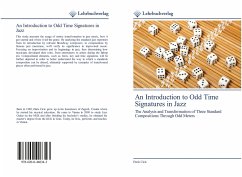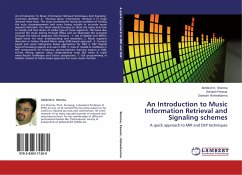This study presents the usage of metric transformation in jazz music, how it got started and where it led the genre. By analyzing the standard jazz repertoire from its introduction by relevant Broadway composers, to compositions by famous jazz musicians, we'll verify its significance in improvised music. Focusing on improvisation and its beginnings in jazz, thus determining how musicians developed their roles, from entertainers to artists during the Bebop era. Compositional elements, such as form, key and time signatures will be further depicted in order to better understand the way in which a standards composition can be altered, ultimately supported by examples of transformed pieces often performed in jazz.
Bitte wählen Sie Ihr Anliegen aus.
Rechnungen
Retourenschein anfordern
Bestellstatus
Storno








